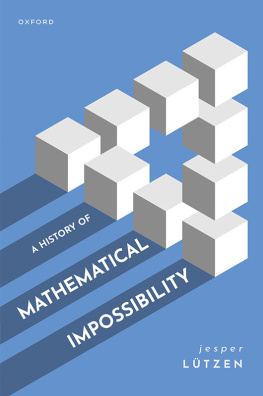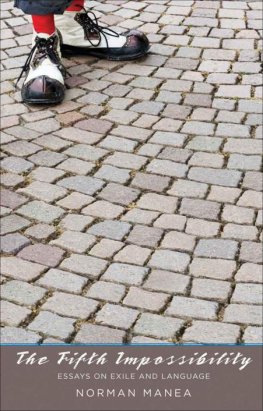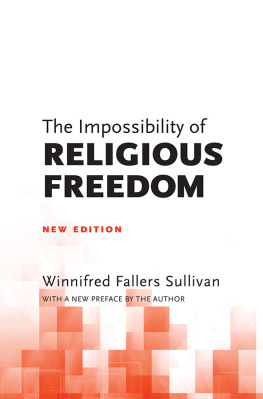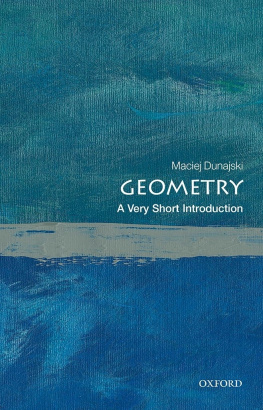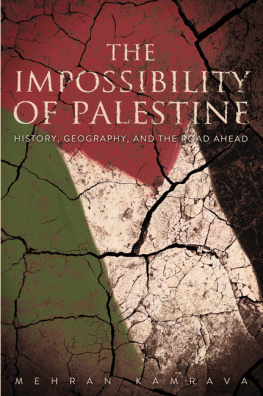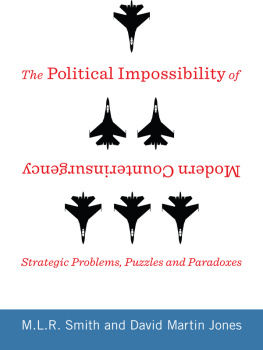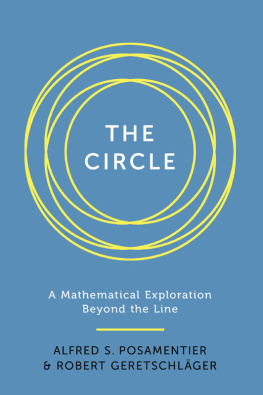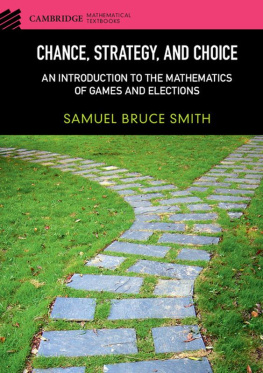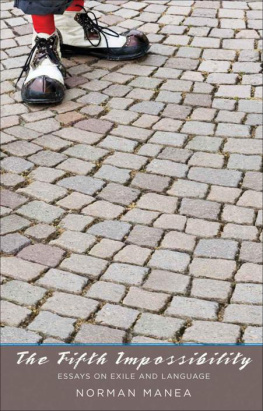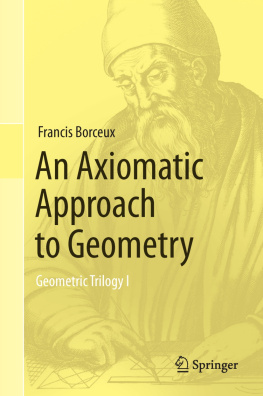

Great Clarendon Street, Oxford, OX2 6DP,
United Kingdom
Oxford University Press is a department of the University of Oxford. It furthers the Universitys objective of excellence in research, scholarship, and education by publishing worldwide. Oxford is a registered trade mark of Oxford University Press in the UK and in certain other countries
Jesper Ltzen 2022
The moral rights of the author have been asserted
Impression: 1
All rights reserved. No part of this publication may be reproduced, stored in a retrieval system, or transmitted, in any form or by any means, without the prior permission in writing of Oxford University Press, or as expressly permitted by law, by licence or under terms agreed with the appropriate reprographics rights organization. Enquiries concerning reproduction outside the scope of the above should be sent to the Rights Department, Oxford University Press, at the address above
You must not circulate this work in any other form
and you must impose this same condition on any acquirer
Published in the United States of America by Oxford University Press
198 Madison Avenue, New York, NY 10016, United States of America
British Library Cataloguing in Publication Data
Data available
Library of Congress Control Number: 2022942881
ISBN 9780192867391
DOI: 10.1093/oso/9780192867391.001.0001
Printed and bound by
CPI Group (UK) Ltd, Croydon, CR0 4YY
Links to third party websites are provided by Oxford in good faith and for information only. Oxford disclaims any responsibility for the materials contained in any third party website referenced in this work.
Preface
Impossible means many things. In everyday language it often means very difficult or it is not yet known how to do it. In mathematics it means it has been proved that it cannot be done. This book deals with the history of mathematical theorems stating that something is impossible in this strict sense of the word. Like many other mathematicians and laypersons, I have been fascinated by impossibility theorems for many years. One of the first courses I taught at Odense University, Denmark, dealt with the history of the classical problems: the quadrature of the circle, the duplication of the cube, and the trisection of the angle. Afterwards I published the lectures as a book (Ltzen 1985), intended for Danish high schools. While working on the lectures and the book I was struck by the fact that the secondary sources dealing with the history of the classical problems had very little to say about the impossibility question. Many scholarly as well as popular books dealt with different constructions of the solutions to the problems in particular in ancient Greece; but when it came to the impossibility of constructing the solutions by ruler and compass alone, most books and papers (including my own) jumped from a few vague remarks about the Greeks to a treatment of the impossibility proofs form the nineteenth century. So when I returned to impossibility problems in Ltzen (2008) I decided to start by looking into the impossibility of the classical problems. My research led to four papers (Ltzen 2009, 2010, 2013, 2014) in which I tried to fill in the gaps in the history of the impossibility of these construction problems. Having finished these specialized investigations, I decided to write a book on the history of mathematical impossibility theorems in general. At that time I had become aware of the very interesting research by Davide Crippa that was partially published in his book (Crippa 2019) and of the rising interest in impossibility questions in science discussed in books like Barrow (1998) and du Sautoy (2016).
While I worked on my book, two related books appeared, namely Stillwell (2018) and Richeson (2019). I only became aware of the two books after I had sent my manuscript to Oxford University Press for publication. Some of the referees pointed my attention to them. Fortunately, my take on the problem of mathematical impossibility was rather different from Stillwells and Richesons. Stillwells Yearning for the Impossible: The Surprising Truths of Mathematics is a very captivating popular presentation of some of the great wonders of mathematics, such as the fourth dimension, the irrational, and the imaginary. I have focused more on the impossibility theorems. Richesons delightful book Tales of Impossibility covers the three classical problems and the problem of constructing regular polygons. My book covers many other impossible problems. In addition, while Barrows and Richesons books are primarily popular books about mathematics using history as a means, my book focuses on the historical development of the problems. It is a book on the history of mathematics.
This book could serve as a textbook in a course on the history of mathematics as well as a leisurely introduction to the subject. Recently, the importance of impossibility questions in the mathematics classroom has been raised by Winicki-Landman (2007) and myself (Ltzen 2013). The present book could enlighten the discussions in the classroom.
My aim has been to write a semi-popular book based on solid historical research. It should be readable by a mathematically interested audience with a good understanding of high school mathematics. In the text and in a separate list of recommended reading I have referred to many secondary sources where the reader can read more about the history of mathematics discussed in the book. I have also referred to many of the important primary sources discussed in the present book, in particular those sources that I quote. However, I have not included all the primary and secondary publications I have consulted because that would have made the list of references extremely long. By consulting the list of references in the papers and books mentioned in the bibliography of this book, the readers can easily work their way back to the primary sources. I have primarily referred to English translations if they exist.
Many colleagues have encouraged me while I have been working on this book. In particular, I wish to thank Davide Crippa, whose Ph.D. thesis I was so fortunate to examine and discuss with him. On that occasion, I also had the pleasure of discussing impossibility problems with Marco Panza. While I worked on the paper on Arrows impossibility theorem I contacted Mark A. Satterthwaite. In an e-mail he explained how he had come to work on the so-called GibbardSatterthwaite theorem. I wish to thank him for this nice piece of information.
Many referees have given very helpful feedback on the first draft of the book. They have corrected mistakes and suggested additions that have improved the book. The following have revealed their names: Jeremy Gray, Reinhard Siegmund-Schultze, David Rowe, Jose Ferreiros, and Robin Wilson. I wish to thank them as well as the anonymous referees. Moreover, I wish to thank Jan Hogendijk who helped me find material concerning impossibility statements in the medieval Arab world.
Illustrations are an important part of a book. In the process of searching for suitable pictures, I have received help from many corners of the world. First of all, Jim Hyer has made fine (and even improved) photographic reproductions of several of the portraits that we have in our archive at the Department of Mathematical Sciences at the University of Copenhagen. Pamela Moreland from the Stanford News Library has provided me with a picture of Kenneth Arrow, Ccile Bouet from the Bibliothque de lInstitut de France has allowed me to use a picture of Joseph Liouville, Caitlin Rizzo from the Institute of Advanced Study in Princeton has provided me with photos of John von Neumann and Kurt Gdel, and Jennifer Hinneburg from the Mathematisches Forschungsinstitut Oberwolfach provided me with pictures of Georg Cantor, Eugenio Beltrami, Ferdinand Lindemann, and Carl Friedrich Gauss. I wish to thank all of the above for their help.
Next page
